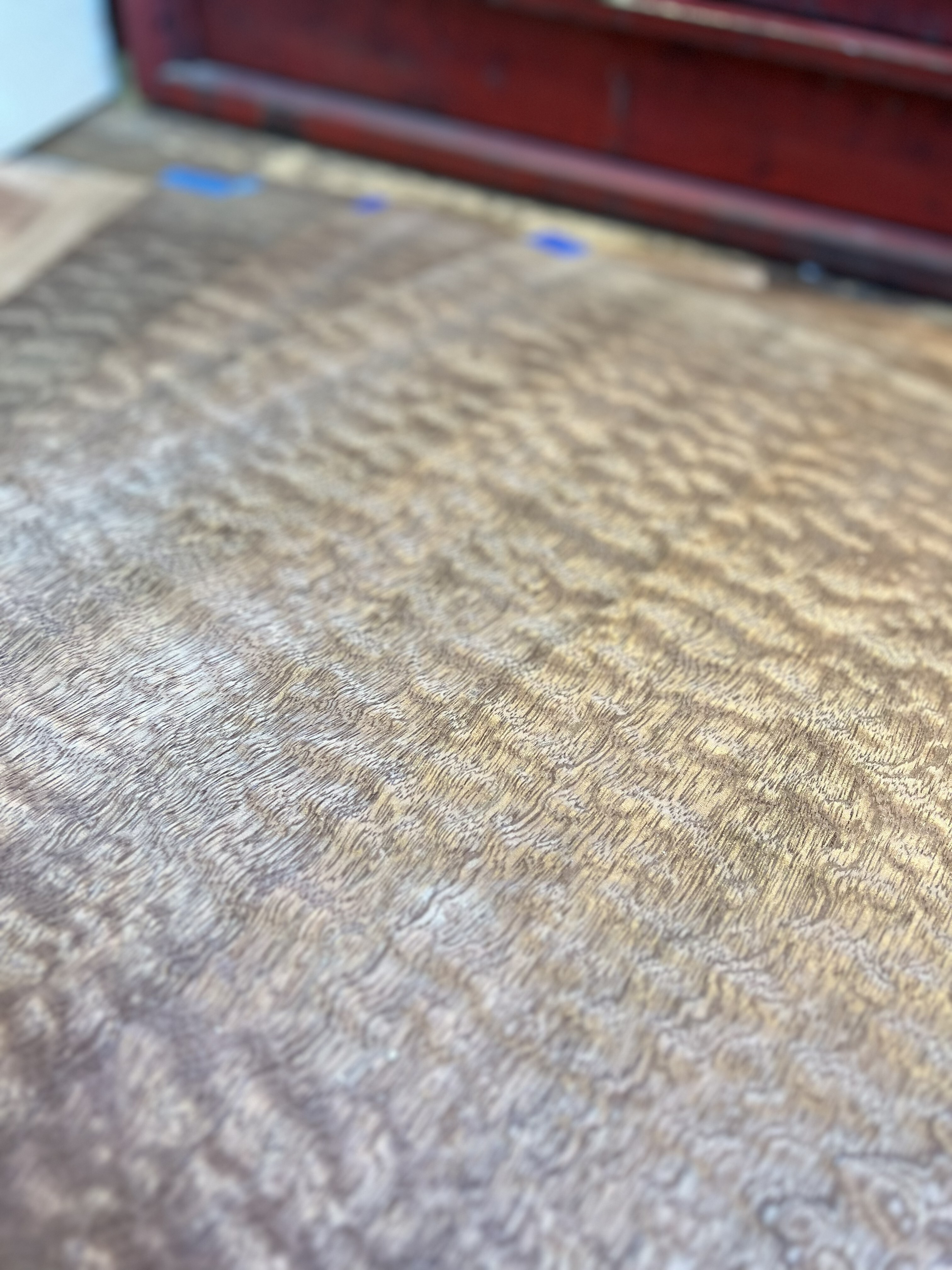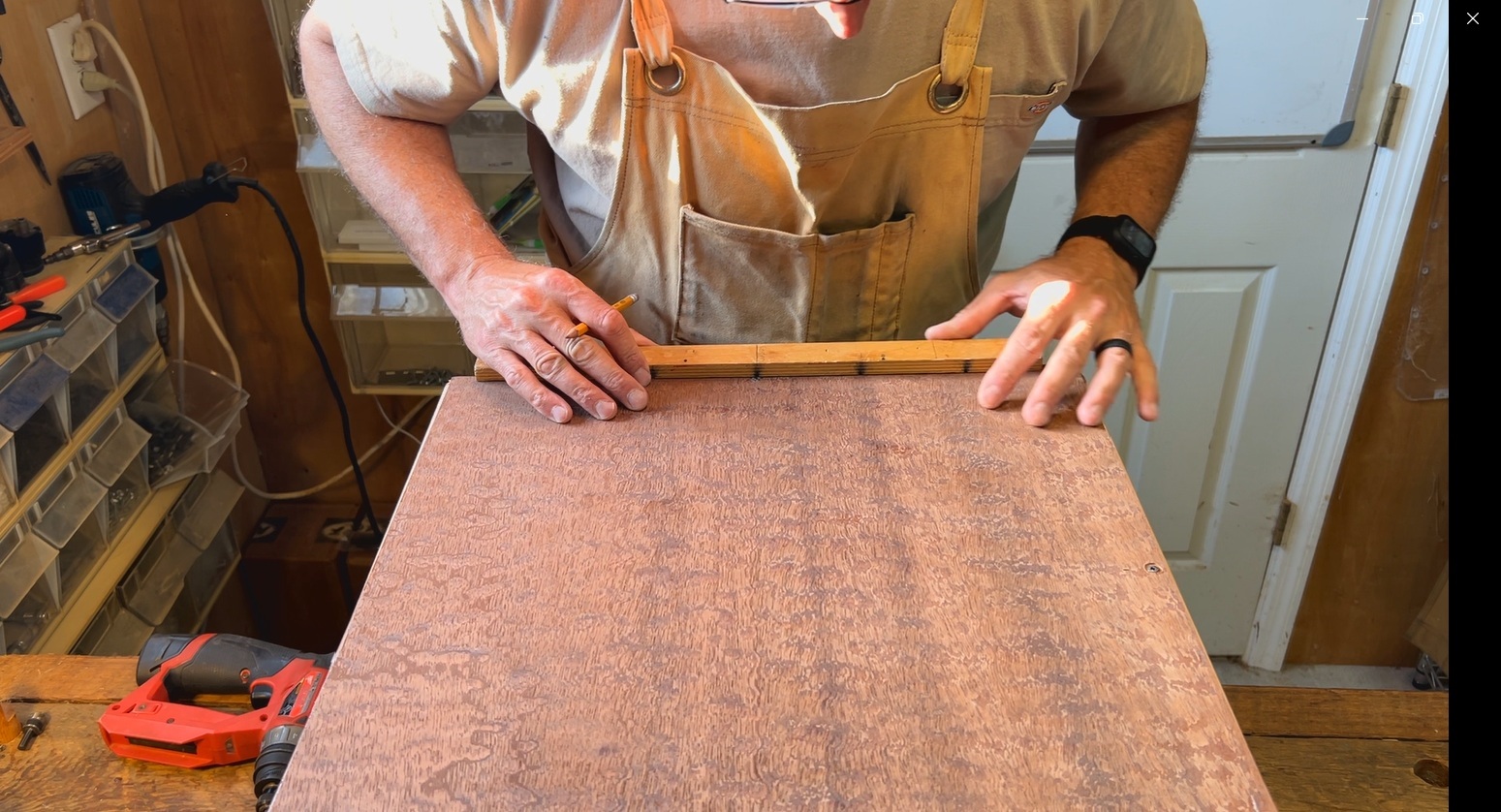Posted by Stephen Head on 9th Nov 2025
Pomelle Sapele: The Depth and Movement Within the Grain
Some woods draw attention before they make a sound. Pomelle Sapele is one of them. Its surface looks alive, a three-dimensional ripple that shifts with the light, almost like water caught in motion. That figure is not a finish trick. It is built into the grain itself.
Pomelle figure happens when the wood fibers grow in small, irregular waves instead of straight lines. When cut and sanded flat, those waves refract light from different angles, creating a sense of movement across the surface. It is a rare pattern, most often found in the heartwood of mature Sapele trees. No two sets ever look quite the same, and that unpredictability is part of what makes it special.

When I’m selecting Pomelle veneer for an instrument, I look for a few key things. The depth and rhythm of the figure matter most. Some sets have tight, concentrated “blisters,” while others show a wider rolling motion across the sheet. I pay attention to how the pattern will read across the face of the drum. Sometimes I’ll bookmatch a set for balance, but other times a single large sheet with continuous figure feels more natural. It depends on what the wood is giving me. The grain orientation affects how light moves across the surface, so the direction I cut and glue the panels in plays a big role in the final look.
Working with Pomelle requires a slower approach. The grain can reverse direction with very little warning. A pass with a sander that would normally smooth another species can easily tear out or flatten the figure here. Light, even pressure and frequent inspection are key. Once the surface is uniform and the pores are prepared, that is when the real transformation begins.

The first coat of sealer is where the figure starts to reveal itself. Under raw light, the surface looks soft and matte, but as the sealer flashes off, the depth begins to show. Each layer adds more contrast and clarity. When the lacquer finally goes on and levels out, the wood takes on a glass-like depth. You can move the light and watch the figure ripple beneath the surface. It is one of those moments in the process that never gets old.
From a tonal perspective, Sapele is often compared to Mahogany, and for good reason. It has a similar warmth, but with slightly more density and projection. That means a tighter low end and a more focused attack. On a cajon, it produces an articulate bass response with clean mids and smooth highs. The result is a tone that feels balanced across the frequency range without losing its warmth.

The Pomelle Sapele cajon I just completed is a good example of how figure and tone can work together. The rippled pattern came alive under the lacquer, and the drum itself responds evenly from soft taps to full dynamic hits. It has that combination of visual movement and sonic steadiness that feels right in the hands of a serious player.

